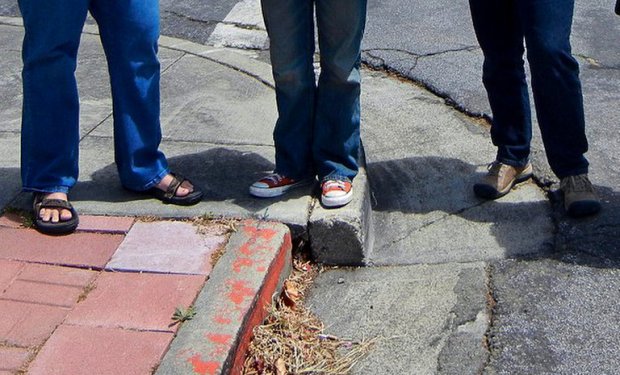Hayward, California is the home of the Hayward Fault, which is a break in the Earth’s crust. Geologically speaking the Hayward Fault moves very fast. You can see that the tectonic plates are always moving when you look at the roads. Since it only moves a few millimeters a year, the roads and/or curbs don’t crack but instead gently wiggle apart at the seams.[*] See how this curb at Rose and Prospect has moved over time?

This is how the curb looked in 1974. It has already drifted several inches from where it was originally. Photo from http://www.geologyfieldtrips.com/haywardresidential.htm

This is how the curb looked in May 2012. See how far this piece has moved away? Photo by Andrew Alden at oaklandgeology.wordpress.com
If you want to go to California and see it for yourself, you are out of luck. The city has just replaced the curb. This is probably the first time that road work has made it into the New York Times. Read the article here: A Curb is Repaired and a Seismic Marker is Lost
[*]Note: Cracks in the road are not caused by plate tectonics. They are caused by thermal expansion/contraction, road salt, heavy trucks, and degredation of the road bed.


